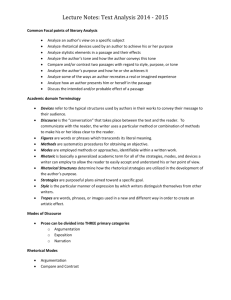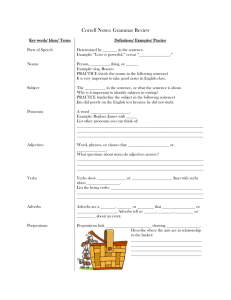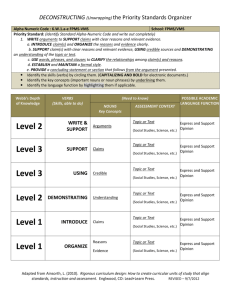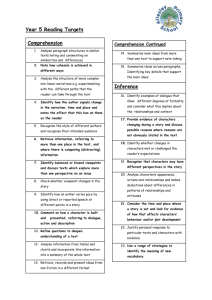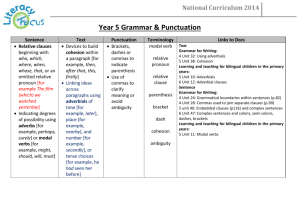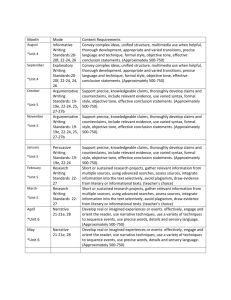Expository Writing Rubric—Final Summative LEARNING TARGET
advertisement
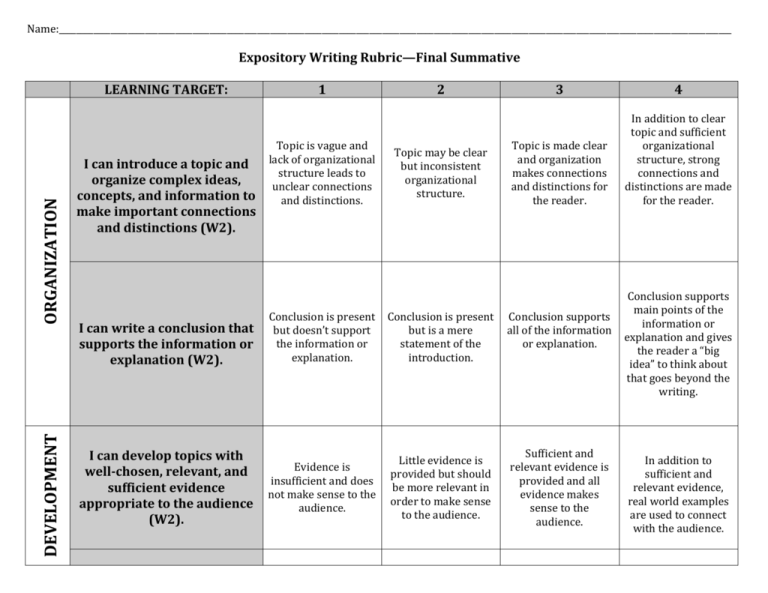
Name:____________________________________________________________________________________________________________________________________________________________ Expository Writing Rubric—Final Summative DEVELOPMENT ORGANIZATION LEARNING TARGET: I can introduce a topic and organize complex ideas, concepts, and information to make important connections and distinctions (W2). I can write a conclusion that supports the information or explanation (W2). I can develop topics with well-chosen, relevant, and sufficient evidence appropriate to the audience (W2). 1 Topic is vague and lack of organizational structure leads to unclear connections and distinctions. 2 Topic may be clear but inconsistent organizational structure. Conclusion is present but doesn’t support the information or explanation. Conclusion is present but is a mere statement of the introduction. Evidence is insufficient and does not make sense to the audience. Little evidence is provided but should be more relevant in order to make sense to the audience. 3 4 Topic is made clear and organization makes connections and distinctions for the reader. In addition to clear topic and sufficient organizational structure, strong connections and distinctions are made for the reader. Conclusion supports all of the information or explanation. Sufficient and relevant evidence is provided and all evidence makes sense to the audience. Conclusion supports main points of the information or explanation and gives the reader a “big idea” to think about that goes beyond the writing. In addition to sufficient and relevant evidence, real world examples are used to connect with the audience. Very limited or Some use of precise Adequate use of I can use precise language inconsistent use of language and subject precise language and and subject specific precise language and specific vocabulary to subject specific vocabulary to manage the subject specific manage the vocabulary to complexity of the topic (W2). vocabulary to complexity of the manage the LANGUAGE manage the complexity of the topic. I can use words, phrases, and clauses to create cohesion that will clarify relationships between complex ideas and concepts (W2). I can establish and maintain a formal style and objective tone by following the conventions of grammar (W2). There are few, if any, words, phrases, and clauses that create cohesion to clarify relationships between topic and examples. Limited or inconsistent use of grammatical conventions to establish and maintain a formal style and objective tone. topic. complexity of the topic. Sophisticated use of precise language and subject specific vocabulary to manage the complexity of the topic. There are some words, phrases, and clauses that create cohesion and attempt to clarify relationships between topic and examples. Words, phrases, and clauses create cohesion to clarify relationships between topic and examples. In addition to adequate use of words, phrases, and clauses to create cohesion to clarify relationships between topic and examples, there are sophisticated explanations that enhance these connections. Some use of grammatical conventions to establish and maintain a formal style and objective tone. Adequate use of grammatical conventions to establish and maintain a formal style and objective tone. Uses grammatical conventions to establish and maintain a formal style and objective tone that also engages the reader.
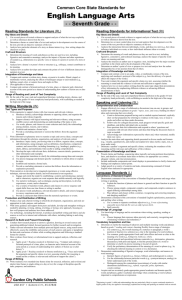
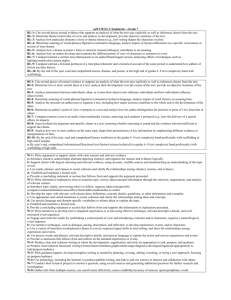

![Published Twitter Memoir Rubric [1/27/2016]](http://s3.studylib.net/store/data/006726408_1-b868f5b19d87f53393c6e0d8910c2e43-300x300.png)
